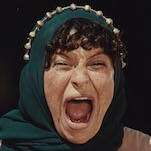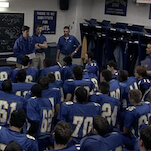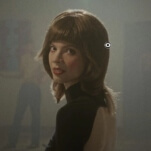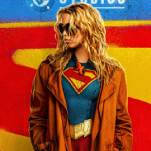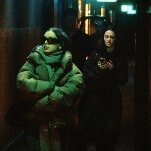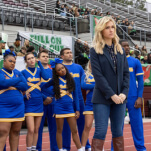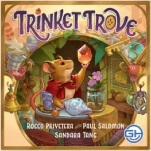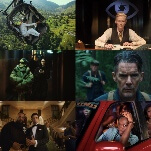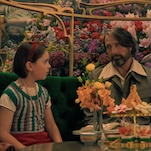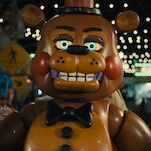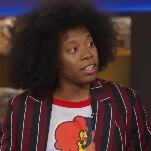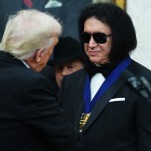Resident Evil remains the exception rather than the rule for female-led action franchises
In a filmmaking landscape where female-fronted franchises are quickly axed, this long-running series is proof that they work.
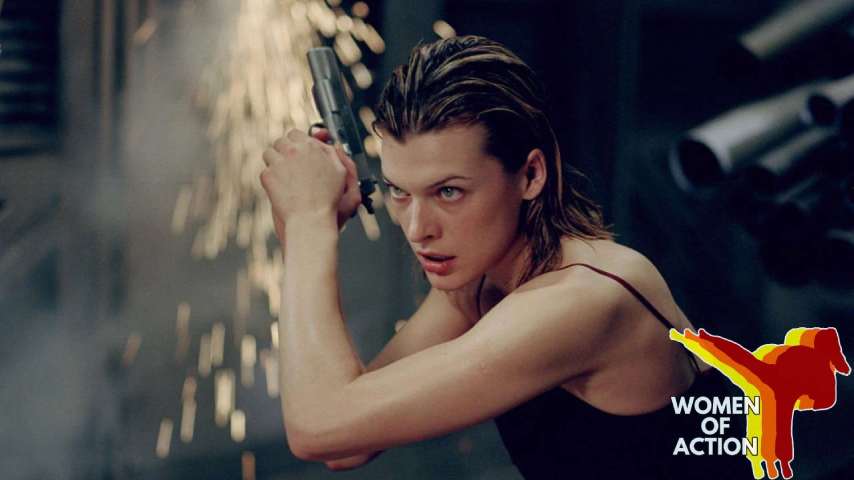
With Women Of Action, Caroline Siede digs into the history of women-driven action movies to explore what these stories say about gender and how depictions of female action heroes have evolved over time
For a schlocky action series featuring zombie dogs and killer laser grids, Resident Evil carries quite a few cinematic distinctions. At various points, it’s been the highest-grossing horror film franchise, the highest-grossing zombie series, and the highest-grossing video game adaptation. Before The Last Of Us turned video game zombies into prestige television, writer-director Paul W. S. Anderson turned them into slick, goofy B-movie fodder. And in between the hyper-stylized fun, Resident Evil also quietly challenged Hollywood norms about who gets to lead action movie franchises.
If women-led action movies are rare enough in Hollywood, women-led action franchises are even rarer. When it comes to series that expand beyond just one sequel, you can almost count them on one hand (and virtually all of them star white women). The 1980s and 1990s paved new ground with the twin Alien and Terminator franchises. The 2010s were defined by The Hunger Games and copycat series like Divergent. And the 2000s were dominated by two techno-infused, horror-inspired, post-Matrix franchises that each created a real-life marriage: Anderson and Milla Jovovich’s Resident Evil and Len Wiseman and Kate Beckinsale’s Underworld.
Of course, Underworld and Resident Evil aren’t the only women-led action blockbusters of a decade that also gave us Angelina Jolie as Lara Croft, a new set of Charlie’s Angels, and Quentin Tarantino’s Kill Bill series. Nor are they the only films to lean into the leather-clad genre aesthetic that also popped up in mid-aughts flops like Catwoman, Elektra, Æon Flux, and Jovovich’s Ultraviolet. But they are notable for their sheer longevity. Ripley, Sarah Connor, and Katniss Everdeen each got four films apiece. Beckinsale’s Selene fought Lycans across five Underworld installments, but Jovovich’s Alice battled zombies and corporate overreach through a whopping six Resident Evil films, right on through to 2017’s Resident Evil: The Final Chapter.
It’s the sort of ongoing iconography we take for granted when it comes to male action heroes. Even setting aside superheroes and the whole James Bond franchise, it’s not unusual for male-led series to reach four or more films—think Die Hard, Rambo, Bad Boys, Lethal Weapon, Indiana Jones, John Wick, Mission: Impossible, and the Bourne franchises to name just a few. There’s a casual cultural assumption that male action heroes deserve to take up cinematic space. Women, meanwhile, have to fight for their place at the franchise table, even as they regularly star in action films that make tons of money at the box office.
Released in 2002, the first Resident Evil made an impressive $103 million on a $33 million budget, numbers the rest of the franchise would only improve upon. In many ways it was a movie of its moment: Jovovich was a few years out from her breakout role in The Fifth Element, Anderson was a few years out from successfully bringing Mortal Kombat to the big screen, and the best-selling Resident Evil video game series was on its fourth installment. In other ways, however, Anderson clearly found his inspiration in earlier female-led action franchises that had paved the way.
While Resident Evil would eventually become synonymous with delightfully daffy, increasingly apocalyptic sci-fi storytelling, the first installment starts with the horror movie simplicity of the initial Alien and Terminator films. In the sequels, Jovovich’s Alice casually runs down the exterior of a building. In the first film, it’s a huge moment when she jump-kicks off a wall. (In both cases, Jovovich did the stunt herself.) While legendary horror director George A. Romero had taken a stab at a more direct adaptation of the game (which had been inspired by his zombie movies to begin with), the German production company that owned the film rights decided to go with Anderson’s idea for a more self-contained prequel. Anderson even invented a brand-new protagonist for the series: an amnesiac Alice in Wonderland who falls down the rabbit hole of a high-tech underground lab overrun by zombies.
On paper, there’s actually quite a bit of plot to the first Resident Evil movie. Alice is an above-ground security guard for a secret underground research facility run by the malevolent Umbrella Corporation. When Umbrella’s genetically engineered T-virus contaminates “the Hive,” an automated AI computer system known as the Red Queen wipes Alice’s memory and kills everyone inside in various Final Destination-esque ways (including a great bit of elevator horror). A team of commandos soon swoops in to figure out what happened, and they wind up taking Alice and a few other stragglers down into the Hive to explore its mysteries level by level.



